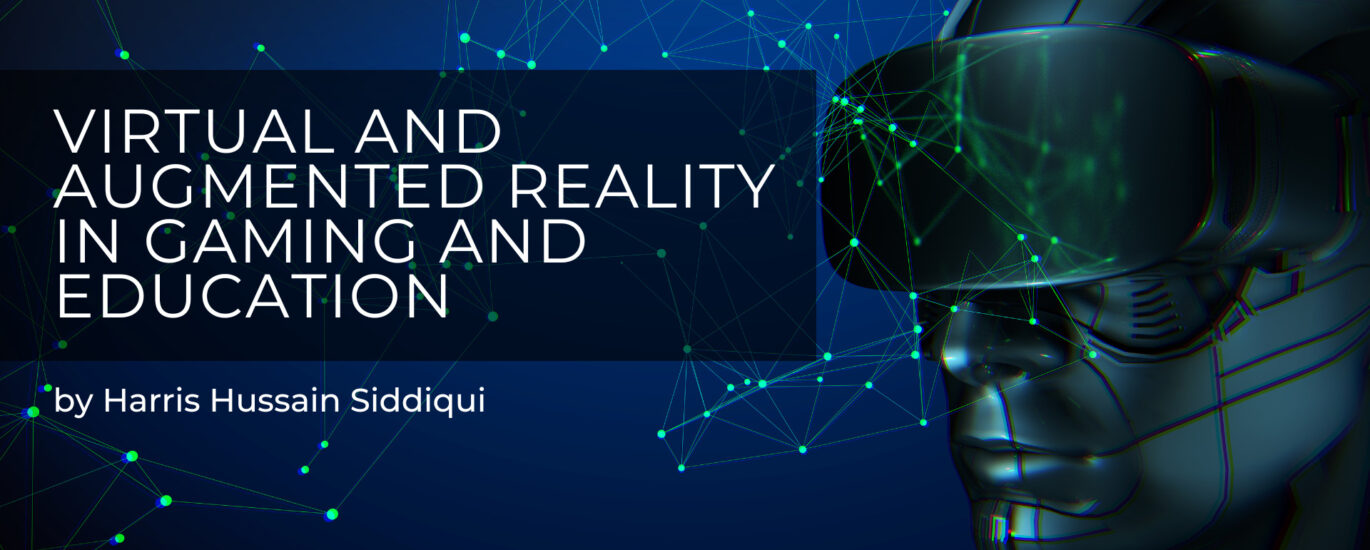


As technology advances and the world of virtual and augmented reality becomes more accessible, the possibilities for gaming and education are endless. In this article, we’ll explore how virtual and augmented reality could revolutionize both gaming and education, from creating immersive learning experiences to unlocking new levels of engagement in gaming. Let’s dive in!
Introduction to Virtual and Augmented Reality
Virtual reality (VR) and augmented reality (AR) are two cutting-edge technologies that are quickly gaining traction in the gaming and education industries. VR is a completely immersive experience where users can interact with virtual environments. AR, on the other hand, augments real-world environments with digital information and objects.
Both VR and AR have a wide range of applications in gaming and education. In gaming, VR can be used to create realistic and immersive experiences that are otherwise not possible. For example, VR can be used to allow gamers to explore vast open worlds or to fight enemies in first-person combat. AR can also be used in gaming to provide contextual information about the game environment or digitally augment the game world.
In education, VR and AR can be used to create more interactive and engaging learning experiences. For example, VR can be used to take students on virtual field trips to places like historical sites or natural habitats. AR can also be used in education to provide enhanced visualizations of concepts being taught in class or to overlay digital information onto real-world objects.
Benefits of Virtual and Augmented Reality in Gaming
Virtual and Augmented Reality (VR/AR) technology is revolutionizing the gaming industry. VR/AR games provide an immersive experience that can transport players to amazing new worlds. And, because VR/AR games are still in their early stages of development, there are many opportunities for developers to create innovative new gameplay experiences.
There are numerous benefits of VR/AR technology in gaming. First, VR/AR games can provide players with a completely immersive experience. When players put on a VR headset, they are transported into the game world and can interact with it in a realistic way. This immersion can make VR/AR games more exciting and engaging than traditional video games.
Second, VR/AR games have the potential to be much more interactive than traditional video games. In a traditional video game, players usually have to rely on a controller or keyboard to interact with the game world. However, with VR/AR technology, players can use their hands and bodies to interact with the game world in a natural way. This level of interaction can make VR/AR games much more enjoyable and immersive than traditional video games.
Finally, VR/AR technology provides developers with an opportunity to create innovative new gameplay experiences that would not be possible with traditional video game technology. For example, developers can create games that allow players to explore vast open worlds in a realistic way or develop new types of puzzle-solving gameplay that takes advantage of the unique capabilities of VR headsets.
Benefits of Virtual and Augmented Reality in Education
Virtual and Augmented Reality (VR/AR) technology is becoming increasingly popular and accessible, with applications in both gaming and education. VR/AR can provide an immersive and interactive experience that can be used for learning, assessment, and engagement. Here are some of the potential benefits of using VR/AR in education:
Challenges with Virtual and Augmented Reality
With the release of products like the Oculus Rift, HTC Vive, Sony VR, and Microsoft HoloLens, virtual and augmented reality are becoming more and more commonplace. However, there are still many challenges that need to be addressed before these technologies can be fully integrated into gaming and education.
One of the biggest challenges is the cost of hardware. The high-end VR headsets can cost upwards of $1000, which is a prohibitive price for many people. In addition, there is also the issue of content. There are not yet many VR games or educational applications available, so there is not a lot of incentive for people to invest in the hardware.
Another challenge is that VR and AR technology is still in its early stages of development. This means that there are often technical issues that need to be ironed out. For example, latency (the delay between when an action is performed and when it is displayed on screen) can be a major problem with VR, as even a slight delay can cause nausea or disorientation.
Finally, there are also concerns about the potential health effects of using VR or AR devices for long periods of time. Some studies have suggested that prolonged use could lead to problems such as eye strain, neck pain, and headaches. As VR and AR technology becomes more popular, these health concerns will need to be properly addressed.
Examples of VR/AR Use in Gaming and Education
There are many examples of how virtual and augmented reality can be used in gaming and education. One example is using VR to create a more immersive gaming experience. This can make games more realistic and engaging for players. Another example is using AR to provide educational content in a more interactive and engaging way. This can help students learn new concepts and retain information better.
Conclusion
Virtual and Augmented Reality have the potential to revolutionize gaming and education in ways that we can only begin to imagine. They offer an immersive experience for gamers, allowing them to become fully immersed in their games, while also providing teachers with a powerful tool to engage students. As technology advances and more applications are created, these two realities will undoubtedly continue to influence and shape how we interact with our world.